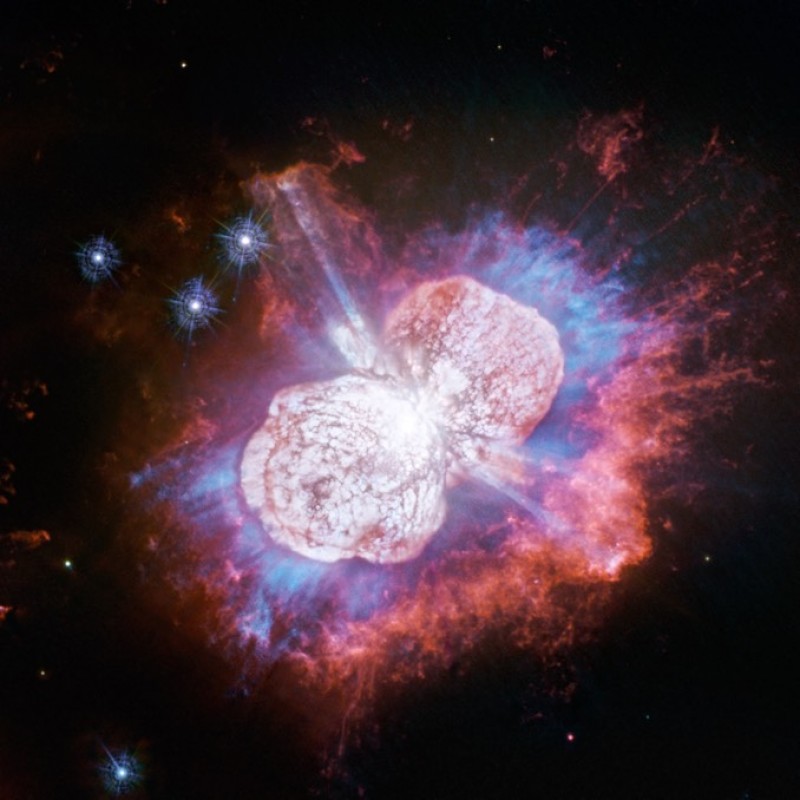

The Hubble Space Telescope has provided another remarkable view of Eta Carinae, one of the galaxy’s most massive stars as it continues a cosmic fireworks show, a slow-motion train wreck that may end with a cataclysmic supernova blast in the astronomically near future.
The show began 170 years ago when the star suddenly and dramatically brightened in an 18-year-long event now known as the “Great Eruption.” Becoming the second brightest star in the sky for more than a decade, Eta Carinae eventually faded from view, now and then brightening and dimming.
One possible explanation for the Great Eruption is that the largest member of a triple star system, one with more than 150 times the mass of the Sun, swallowed a smaller companion, throwing out two huge lobes of gas and dust that give the system its iconic appearance.
The star remains on an apparent path toward supernova, and Hubble’s latest image reveals the ultraviolet glow of magnesium between the lobes expanding to either side of the central binary and the regions just beyond the bubbles where nitrogen filaments are heated by shock waves.
“We’ve discovered a large amount of warm gas that was ejected in the Great Eruption but hasn’t yet collided with the other material surrounding Eta Carinae,” said Nathan Smith, lead investigator of the Hubble program. “Most of the emission is located where we expected to find an empty cavity. This extra material is fast, and it ‘ups the ante’ in terms of the total energy for an already powerful stellar blast.”
Hubble has studied Eta Carinae for decades in visible and infrared light, “and we thought we had a pretty full accounting of its ejected debris,” Smith said.
“But this new ultraviolet-light image looks astonishingly different, revealing gas we did not see in other visible-light or infrared images. We’re excited by the prospect that this type of ultraviolet magnesium emission may also expose previously hidden gas in other types of objects that eject material, such as protostars or other dying stars. Only Hubble can take these kinds of pictures.”